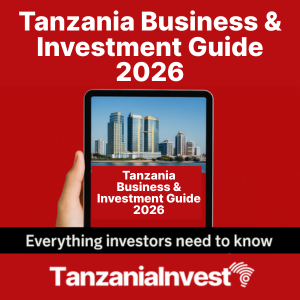On 23rd June 2023, the Confederation of Tanzania Industries (CTI) presented the Growth Diagnostics and Competitiveness Study of the Manufacturing Sector in Tanzania to the TNBC (Tanzania National Business Council) industrialisation working group.
The study is intended to promote a better understanding of the reasons why the country has failed to achieve its industrialization goals and includes general policy recommendations.
The report has been prepared by Growth Co-Lab at the London School of Economics and Political Science (LSE) with the support of CTI, Tanzania’s Ministry of Industry and Trade, Tanzania’s National Bureau of Statistics, the Bank of Tanzania, and the European Commission.
Key Findings
The study explains that, despite Tanzania’s significant economic acceleration over two decades, growing at a compounded annual growth rate of 6% between 1998 and 2018, the manufacturing sector did not increase its share of GDP, which lingered below 10% throughout the same period.
In 2021, manufacturing’s share of GDP was well below the expected value given the country’s income, making Tanzania one of the least industrialized countries in the peer group.
In 2020, the sector employed approximately 150 thousand workers in firms with more than 10 people, representing about 0.6% of total employment in the country.
The share of manufacturing in total exports has remained below 25% from 1995 to 2020, making Tanzania one of the countries with the lowest manufacturing export shares in the peer group.
Growth Diagnostic Findings
- Availability and quality of electricity supply: Frequent electrical outages are a major challenge for large firms in the manufacturing sector, affecting production schedules and plant locations.
- Business environment: Access to land, labour regulations, and red tape pose significant challenges for international investors and exporters. Formal wage levels in Tanzania are not competitive enough to attract international investment.
- Land acquisition: Current legislation does not allow direct ownership of land for foreign investors, making land acquisition complicated. The implementation of Export Processing Zone (EPZ) and Special Economic Zone (SEZ) schemes has also faced challenges in providing serviced land.
- Taxation system: The taxation system in Tanzania is stuck in an equilibrium with relatively higher tax rates, numerous exemptions, and low overall tax collection. This hinders investment and growth in the manufacturing sector.
- Inefficiencies in infrastructure: While Tanzania has made strides in improving transportation and communications infrastructure, there are still inefficiencies, especially in air transportation. These inefficiencies can hinder manufacturing growth.
- Protective policies and anti-export bias: Protective trade policies in Tanzania have favoured energy and capital-intensive sectors, leading to an anti-export bias. The manufacturing sector relies on continuous trade protection to survive in the face of cheaper imports, hindering the sector’s competitiveness in international markets and limiting its growth potential.
- Failure to address binding constraints: The most pressing constraints, such as electricity supply, access to serviced land, and excessive regulatory burdens, have not been adequately addressed by initiatives like EPZs and SEZs. This failure reinforces the capital and energy-intensive bias of the manufacturing sector.
General Policy Recommendations
The study includes a number of recommendations to address the constraints and biases in Tanzania’s manufacturing sector, promote export competitiveness, and create a more conducive and sustainable business environment for industrialization and structural transformation.
- Remove or alleviate the electricity constraints that are endemic to all manufacturing sectors, as well as other constraints that might be hindering productivity in specific sub-sectors. This includes addressing issues such as access to reliable electricity, serviced land, finance, regulatory inefficiency, and red tape.
- Rethink the incentives provided to manufacturing firms and craft an internally consistent plan to articulate the various relevant policy elements. This strategy should consider the manufacturing sub-sectors in Tanzania with the highest export growth potential and the most binding constraints that are preventing investment in these sectors.
- Revise what sectors are protected and what is the set of underlying incentives consistent with Tanzania’s goals for industrialization and structural transformation. The strategy might not necessarily imply the rapid removal of tariff and non-tariff barriers, but it does entail reevaluating the sectors that are protected.
- Consider gradually phasing out tax holidays and trade protections that were put in place to compensate domestic producers for constraints as they are addressed. Additional incentives could be provided, such as eliminating tariffs on intermediate inputs for exporting manufacturing firms.
- Implement effective interventions to address the shortcomings identified in the 2019-2024 Strategic Plan for Export Processing Zones Authority (EPZA). This includes targeting high-export growth potential sectors, and securing reliable and incorporating private investors in special economic zones.
- Prioritize manufacturing sectors with domestic stakeholders and consider filtering them based on criteria relevant to the specific context of Tanzania. This could include factors such as electricity intensity and environmental equilibrium.
You can access the report in full here: https://bit.ly/42QSUBv










